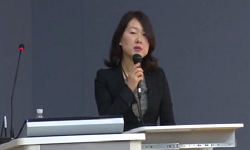To examine the employment of museum communication strategies in China, this study conducted a mixed-method (content analysis and grounded theory) analysis of websites and social media platforms. This study first applies dialogic principles to Chines...
http://chineseinput.net/에서 pinyin(병음)방식으로 중국어를 변환할 수 있습니다.
변환된 중국어를 복사하여 사용하시면 됩니다.
- 中文 을 입력하시려면 zhongwen을 입력하시고 space를누르시면됩니다.
- 北京 을 입력하시려면 beijing을 입력하시고 space를 누르시면 됩니다.
부가정보
다국어 초록 (Multilingual Abstract)
To examine the employment of museum communication strategies in China, this study
conducted a mixed-method (content analysis and grounded theory) analysis of websites
and social media platforms. This study first applies dialogic principles to Chinese
museums and examines the websites of national first-grade museums and their profiles on
the Weibo social media platform to better understand online communication in the
Chinese context. The results revealed that most museums choose one-way
communication as their online communication strategy, whether on websites or social
media. Although the number of websites is greater than that of social media accounts, the
frequency of website updates is lower than that of social media posts. Notably, it was
surprising to find that most museums failed in dialogic communication on websites while
seeking interaction with the public through social media accounts.
In addition, it was found that public visits to museums depend on cultural resources
and activities, not on the performances of dialogic communication. It was also confirmed
that the level of user online engagement on social media is low, although museums actively seek interaction. In addition, the results indicated that the employment of
dialogic communication in museums is not affected by museum type and revealed the
characteristics of museums’ communication strategies on social media posts, which offer
some insights for the museum industry. In the future, both museums and the public should
strengthen dialogic communication, cultivate awareness of participation to build a better
dialogic environment for museums’ sustainable development.
목차 (Table of Contents)
- Abstract .................................................................................................................. vi
- 1. Introduction ......................................................................................................... 1
- 1.1 Research background ................................................................................. 1
- 1.2 Research purpose........................................................................................ 2
- 1.3 Research implications ................................................................................ 3
- Abstract .................................................................................................................. vi
- 1. Introduction ......................................................................................................... 1
- 1.1 Research background ................................................................................. 1
- 1.2 Research purpose........................................................................................ 2
- 1.3 Research implications ................................................................................ 3
- 2. Literature Review and Theoretical Background ................................................. 6
- 2.1 Communication strategy ............................................................................ 6
- 2.1.1 Museum communication strategies.................................................. 8
- 2.2 Online communication ............................................................................. 10
- 2.2.1 Online communication with museums........................................... 11
- 2.2.2 Dialogic communication theory ..................................................... 12
- 2.2.3 Dialogic principles ......................................................................... 13
- 2.3 Museum communication with social media............................................. 16
- 2.3.1 From museum 1.0 to museum 4.0 .................................................. 17
- 2.3.2 Museums with social media ........................................................... 19
- 2.4 Research questions................................................................................... 22
- 2.4.1 Study 1............................................................................................ 22
- 2.4.2 Study 2............................................................................................ 22
- 3. Methodology ..................................................................................................... 23
- 3.1 Study 1...................................................................................................... 23
- 3.1.1 Sample............................................................................................ 23
- 3.1.2 Museum type .................................................................................. 23
- 3.1.3 Coding items .................................................................................. 23
- 3.2 Study 2...................................................................................................... 27
- 3.2.1 Data collection................................................................................ 27
- 3.2.2 Data analysis of grounded theory................................................... 29
- 3.2.3 Coding items for social media........................................................ 33
- 3.2.4 Conceptual model of Study 2......................................................... 36
- 4. Results............................................................................................................... 37
- 4.1 Study 1...................................................................................................... 37
- 4.2 Study 2...................................................................................................... 47
- 5. Conclusion......................................................................................................... 75
- 5.1 Discussion ................................................................................................ 75
- 5.2 Implications.............................................................................................. 79
- 5.3 Limitations ............................................................................................... 80
- References............................................................................................................. 83










